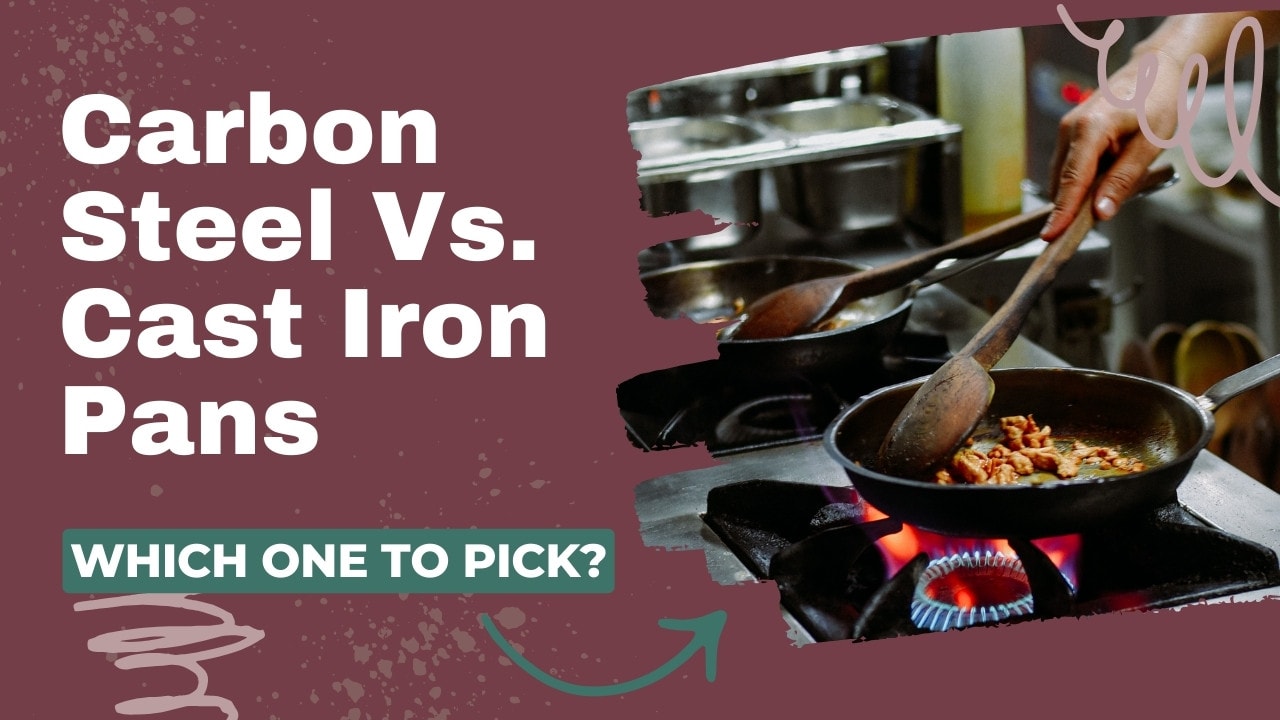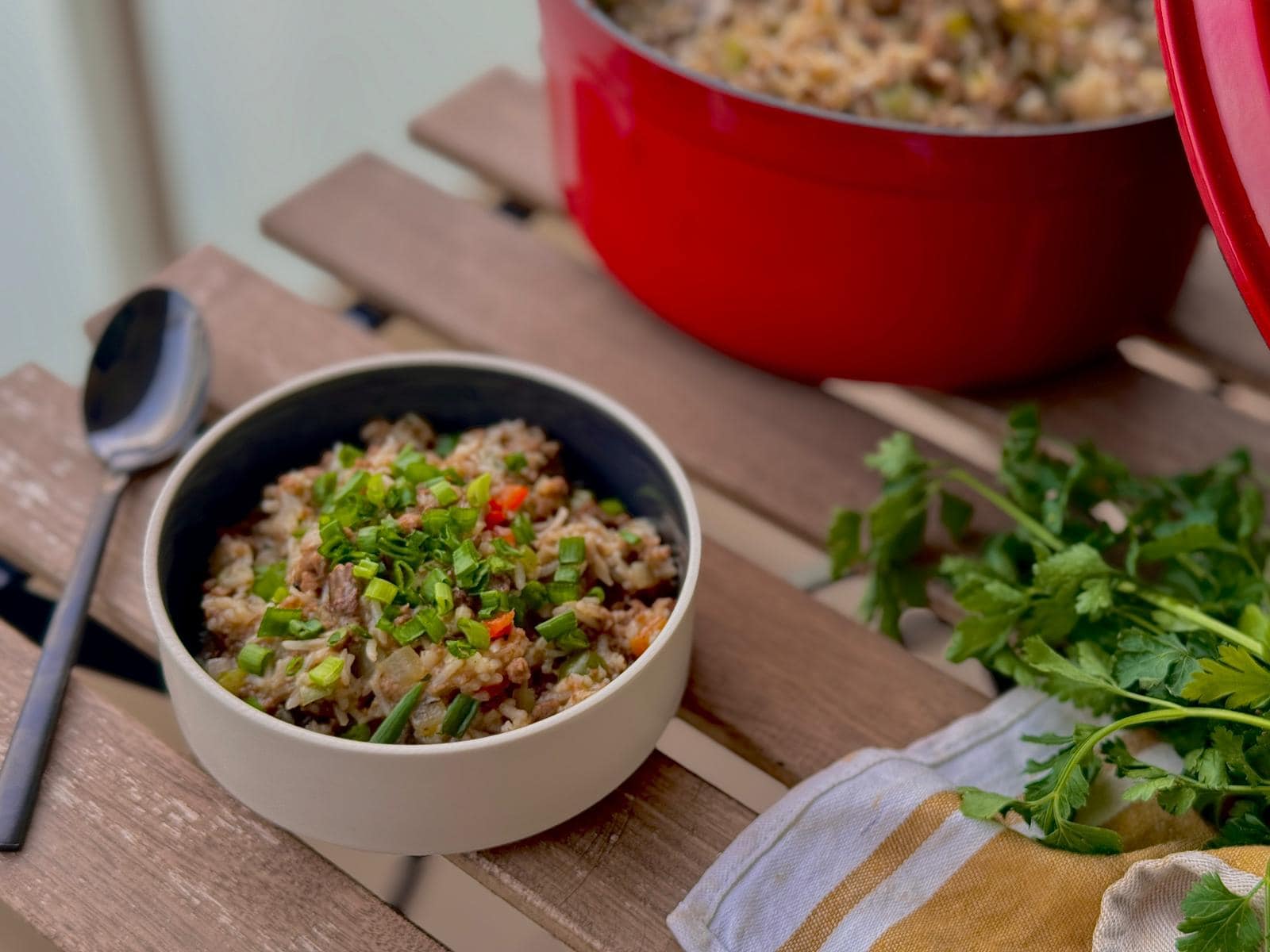If you enjoy cooking in a beloved cast iron skillet, you won’t regret buying a carbon steel pan. Cast iron has been a staple of American kitchens for generations; carbon steel, the favorite cookware of Europeans. Now that they’re both widely available in many regions of the world, we have a choice to make: carbon steel vs. cast iron.
What’s the Difference Between Cast Iron and Carbon Steel Pans?
The main difference between carbon steel and cast iron is the percentage of carbon and iron in their composition. Cast iron actually contains more carbon, which makes it brittle. Carbon steel is harder due to its lower carbon content. So, it can be thinner and lighter, overcoming the biggest disadvantage of cast iron.
Carbon Steel vs Cast Iron Pans – Pros and Cons
| Pros | Cons | |
|---|---|---|
| Carbon Steel | Lightweight Heats up fast | Prone to warping Can rust more quickly |
| Cast Iron | More durable Retains heat well | Heavy Heats up slowly |
Composition
Carbon steel and cast iron are alloys primarily made of carbon and iron. You might find trace amounts of other elements in both. But the main difference between the two is the iron/carbon ratio.
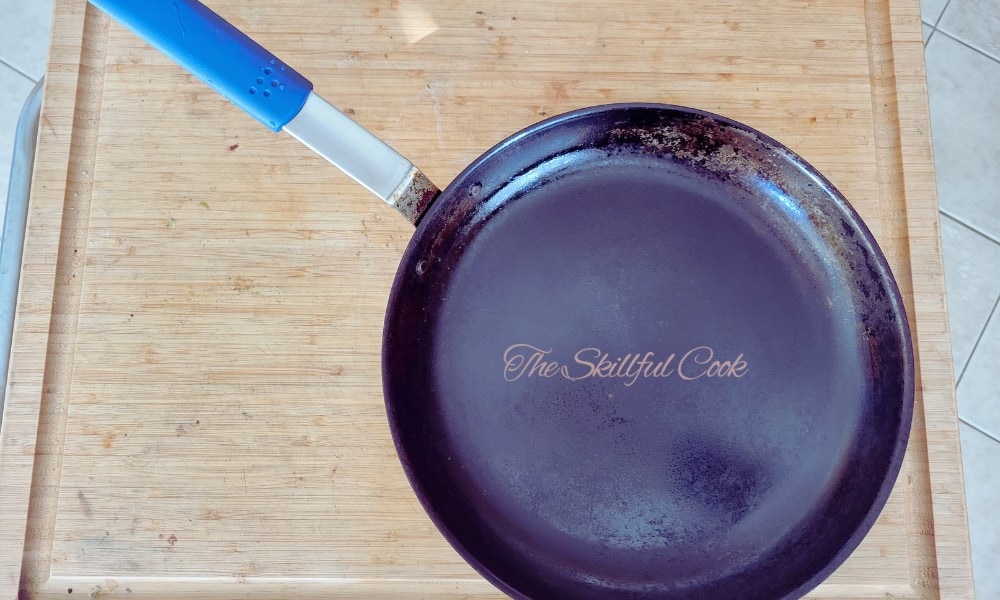
Cast iron contains 96%-98% iron and 2%-4% carbon, depending on the manufacturer. The alloy might contain other elements like copper and manganese.
Carbon steel, on the other hand, is technically a steel. So, it shouldn’t contain more than 2% carbon, meaning cast iron has more carbon than carbon steel. Additional elements that may be found in tiny amounts in carbon steel include manganese, sulfur, and silicon.
Appearance and Weight
If you compare a carbon steel and a cast iron pan side-by-side, you’d never guess they’re so similar in their elemental makeup. They look very different! A carbon steel pan is lighter, thinner, and smoother, made of a single sheet of metal instead of poured into a cast. A carbon steel pan usually has rounded edges, while a cast iron skillet’s edges are more squared.
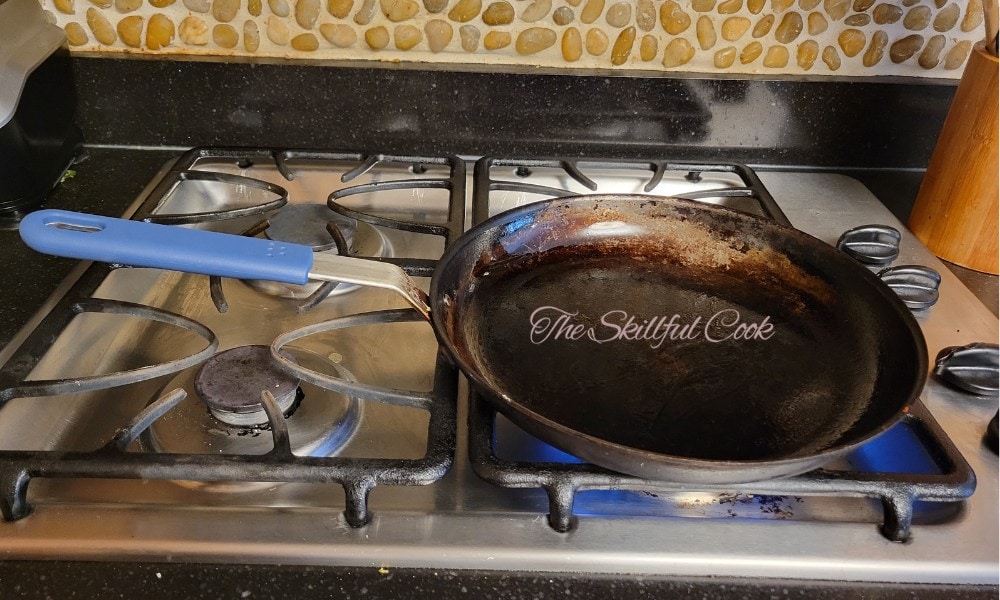
Turns out that the 2% difference in carbon content makes a big difference in how the metal alloy performs. Because of its higher carbon content, cast iron is brittle and can break more easily. So, it’s made to be thick and heavy to resist thermal shock.
Carbon steel doesn’t have this limitation. It can be made thinner without skimping on hardness. It’s more prone to warping than to cracking.
A cast iron skillet weighs about twice as much as a carbon steel pan of the same diameter. For example, this Lodge 10” cast iron skillet weighs 5.35 lbs, while this Lodge 10” carbon steel skillet weighs 3.12 lbs. This makes carbon steel easier to maneuver and less likely to scratch a glass stovetop.
Heat Conductivity
Iron is a great heat conductor, so both carbon steel and cast iron can get ripping hot. However, the thicker the cookware, the slower it heats up because energy has to go through a thicker mass to heat up the entire vessel.
Carbon steel heats faster thanks to its thinner build. Cast iron is thicker and takes more time to heat up. But once it heats up, it takes longer than carbon steel to cool down.
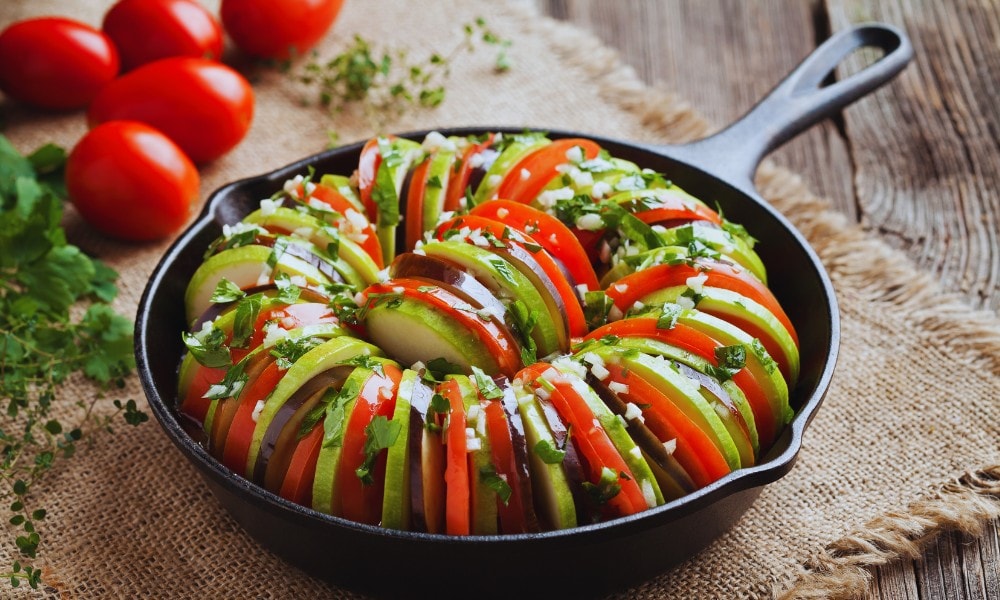
So, cast iron has greater heat retention than carbon steel, making it suitable for slow-cooking dishes that do best with low, consistent heat. Carbon steel is more responsive, making it better on the stovetop for omelets and other things that are easy to overcook.
Versatility
Both cast iron and carbon steel are versatile cooking materials and are compatible with many cooktops, including induction. Carbon steel heats up fast and is easier to move around thanks to its lighter weight. So, it’s ideal for sauteing, stir-frying, searing, and shallow frying. This is why most woks are made of carbon steel.
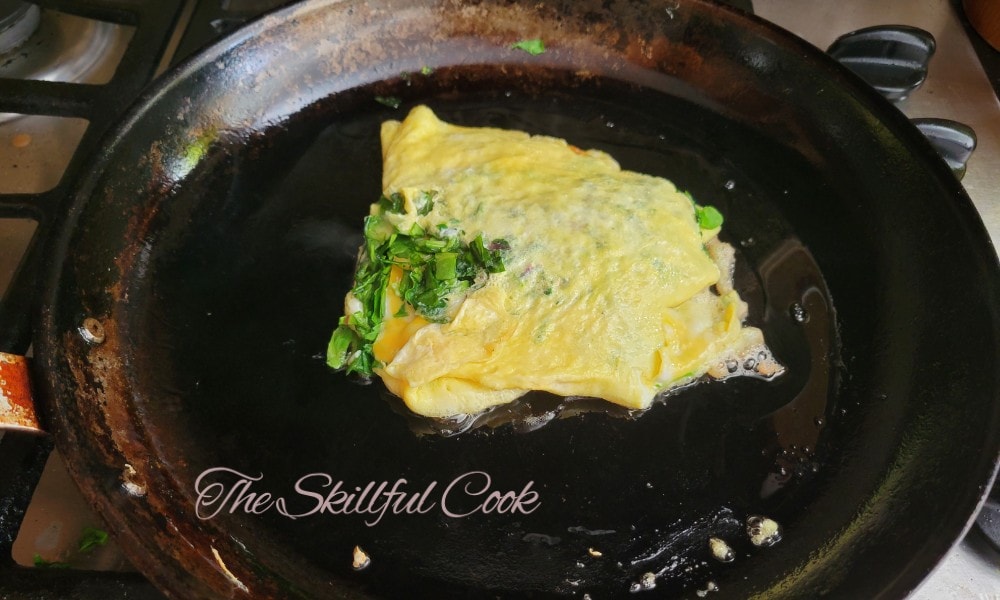
Carbon steel’s surface is less porous than cast iron. Although you need to season both to get a non-stick surface, carbon steel is better for cooking delicate and sticky proteins like fish and eggs.
You can use cast iron for baking and oven and grill roasting as well as general stovetop cooking. It’s also great for searing steaks as it heats up exceptionally well.
However, both carbon steel and cast iron react with acidic foods. Acidic foods strip off the seasoning and give your food metallic flavors if tough the bare metal. So, you may want to switch to stainless steel for simmering tomato sauce or long-cooking acidic foods.
Durability and Longevity
Since both of these pans are made of iron, they can last a lifetime if taken care of properly. They’re both susceptible to rust, but you can easily prevent this by proper seasoning and keeping them dry.
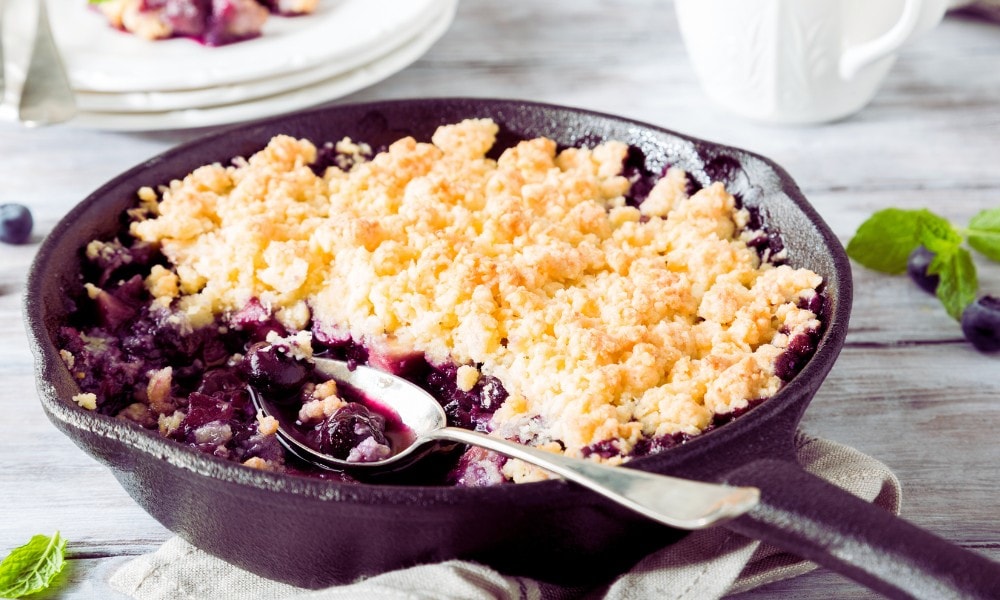
That said, carbon steel tends to be less durable than cast iron as it’s prone to warping and denting. The bottom of many carbon steel pans will swell or expand over time, making it ineffective or unsafe to use on glass, induction, or electric stoves. This happens most when the pan is taken from room temperature to high heat too quickly, so make sure to heat your pan up gradually.
Price and Availability
Cast iron and carbon steel are both affordable. However, carbon steel can be a bit higher priced because of the different manufacturing processes. Still, you can find a great cast iron or carbon steel pan on any budget. They’re both available online and in brick-and-mortar stores.
Cast iron is more widely available. Besides local stores and kitchen supply shops, you can find decently priced cast iron skillets at second-hand shops and thrift stores.
Seasoning and Maintenance
Carbon steel and cast iron pots and pans aren’t nonstick out of the box. But you can get a beautiful mostly nonstick surface with seasoning.
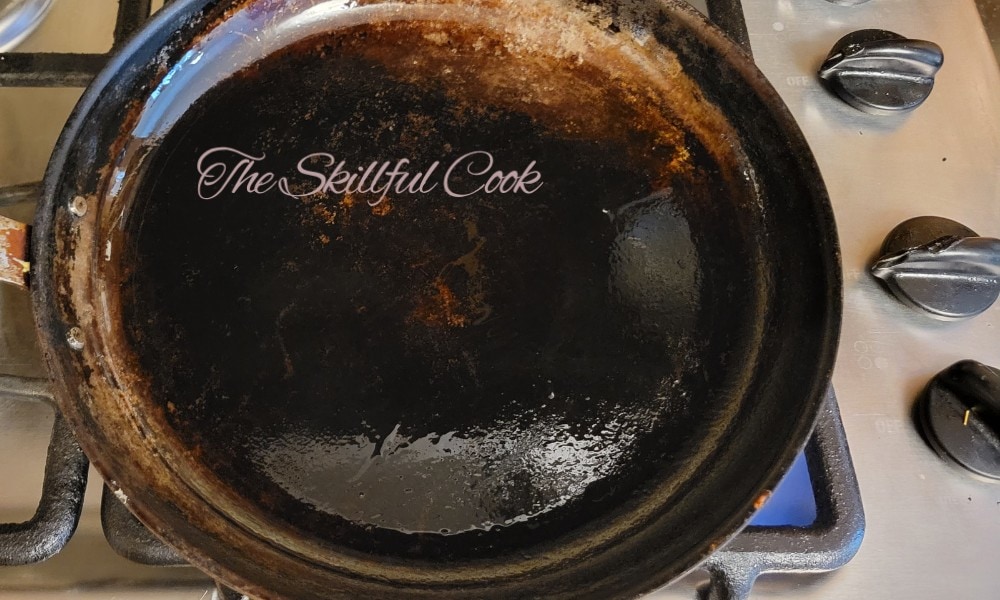
Seasoning also prevents rusting. Cast iron is more resistant to rust than carbon steel given its higher carbon content. But both can rust if you don’t keep a close eye on the seasoning or dry them after washing.
How to Season a Cast Iron or Carbon Steel Pan
Seasoning carbon steel and cast iron involves the same steps.
- Choose a high-smoke point oil, like sunflower, grapeseed, or peanut oil.
- Wash and dry the pan completely.
- Put it on a stovetop at medium heat and let it heat up for 2-3 minutes.
- Pour a few drops of oil and rub it all in using a paper towel. Ensure there’s a very thin layer of oil all around the pan’s surface.
- Increase the heat. Let the oil smoke and form a hard layer on the surface. If you see any oil beads, wipe them away.
- Repeat three or four times.
Tips for Selecting Good Cast Iron or Carbon Steel Cookware
Cast iron and carbon steel pans don’t differ much. Apart from weight, the other differences are negligible in most cases. For many cooking methods, it may not matter which pan you reach for since both get the job done perfectly. However, it’s recommended to keep these pointers in mind:
Is Cooking with Cast-Iron or Carbon-Steel Pans Healthier?
Cast iron and carbon steel are both healthy cookware materials. They don’t have toxic Teflon coatings and can become nonstick with proper seasoning. That’s why many home and professional chefs ditch their nonstick pans for cast iron or carbon steel.
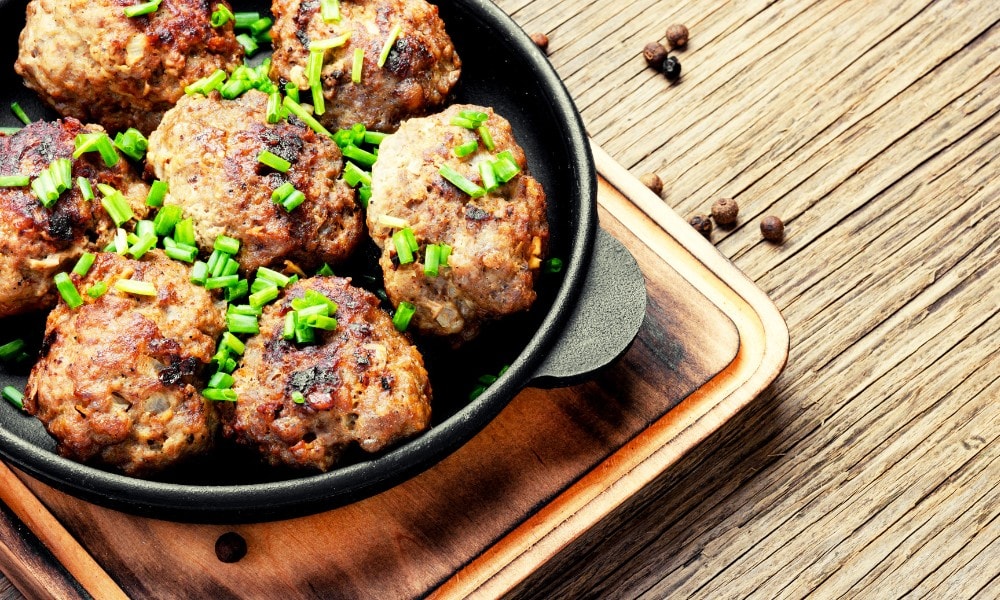
They do react with acidic foods, though. Cooking acidic foods, like tomato sauce, in carbon steel or cast iron can damage the seasoning and expose the metal. Iron can leach into your food, which is not a big issue if you don’t have iron overload in your blood. For simmering acidic foods, stainless steel is a healthier alternative.
Which is Easier to Use – Cast Iron or Carbon Steel Pans?
Carbon steel is easier to use. It’s lighter and easier to maneuver. Stir-frying and sauteing are difficult—if not impossible—with cast iron. Plus, it heats up faster than cast iron, making it an ideal choice in restaurants.
Do Carbon Steel or Cast Iron Pans Last Longer?
Carbon steel and cast iron pans both have excellent durability. They can withstand high temperatures and harsh cooking conditions. However, carbon steel is susceptible to warping if heated under high flames. With proper care and maintenance, both can last for generations.
Conclusion
Carbon steel and cast iron have very similar compositions. Both contain iron and carbon, although at varying degrees. Their similarities far outweigh their differences, making them interchangeable in many cooking settings. The biggest difference is that carbon steel is lighter, making it suitable for stir-frying and sauteing.
If you have any questions about carbon steel and cast iron cookware, please don’t hesitate to ask in the comments below!

